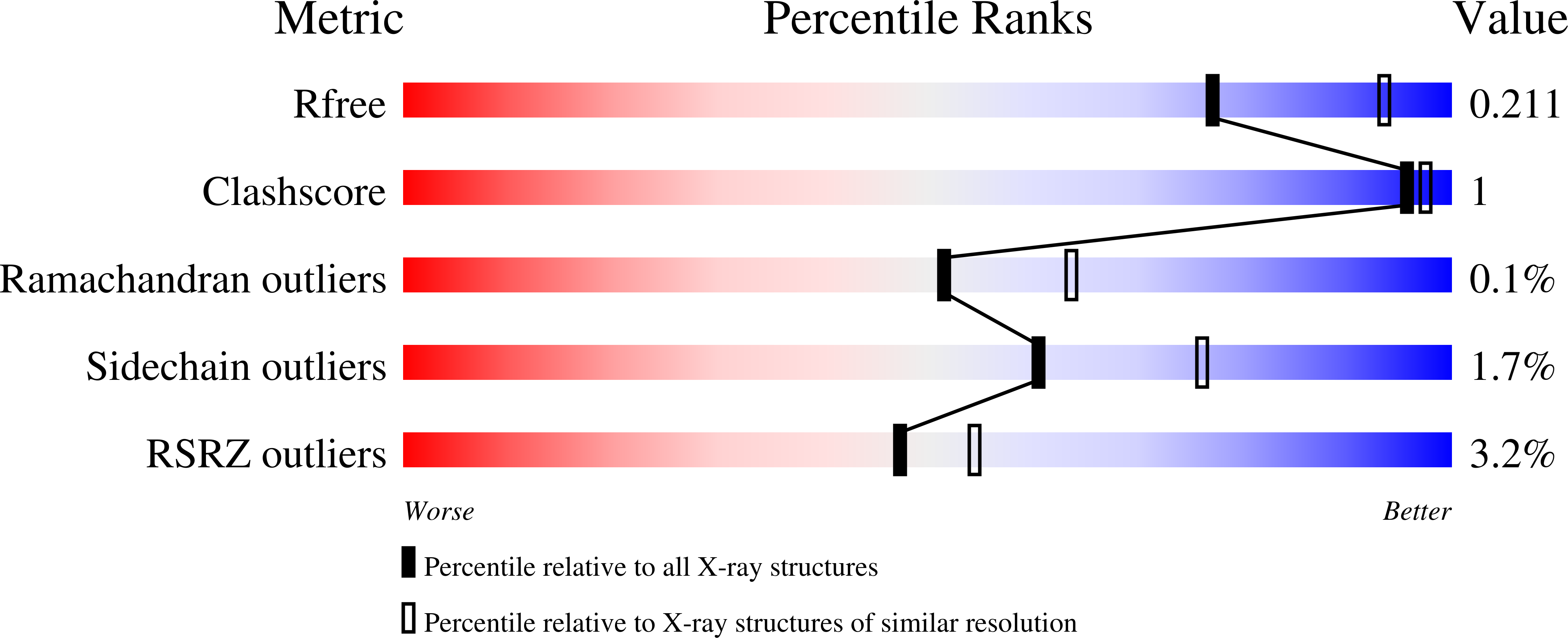Modulating Enzyme Catalysis through Mutations Designed to Alter Rapid Protein Dynamics.
Zoi, I., Suarez, J., Antoniou, D., Cameron, S.A., Schramm, V.L., Schwartz, S.D.(2016) J Am Chem Soc 138: 3403-3409
- PubMed: 26927977
- DOI: https://doi.org/10.1021/jacs.5b12551
- Primary Citation of Related Structures:
5ETJ - PubMed Abstract:
The relevance of sub-picosecond protein motions to the catalytic event remains a topic of debate. Heavy enzymes (isotopically substituted) provide an experimental tool for bond-vibrational links to enzyme catalysis. A recent transition path sampling study with heavy purine nucleoside phosphorylase (PNP) characterized the experimentally observed mass-dependent slowing of barrier crossing (Antoniou, D.; Ge, X.; Schramm, V. L.; Schwartz, S. D. J. Phys. Chem. Lett. 2012, 3, 3538). Here we computationally identify second-sphere amino acid residues predicted to influence the freedom of the catalytic site vibrational modes linked to heavy enzyme effects in PNP. We mutated heavy and light PNPs to increase the catalytic site vibrational freedom. Enzymatic barrier-crossing rates were converted from mass-dependent to mass-independent as a result of the mutations. The mutagenic uncoupling of femtosecond motions between catalytic site groups and reactants decreased transition state barrier crossing by 2 orders of magnitude, an indication of the femtosecond dynamic contributions to catalysis.
Organizational Affiliation:
Department of Chemistry and Biochemistry, University of Arizona , 1306 East University Blvd, Tucson, Arizona 85721, United States.
















